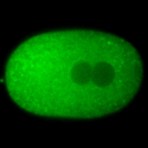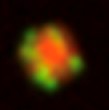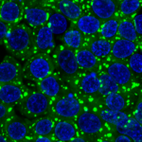Geraldine Seydoux
HHMI & Johns Hopkins University
Seydoux's work has focused on the earliest stages of embryogenesis and how single-celled eggs develop into multicellular embryos. The Seydoux lab attempts to determine the process by which embryonic development and polarization are activated. Seydoux studies Caenorhabditis elegans to examine how embryos choose between soma and germline.[8] She was able to demonstrate that the synthesis of mRNA must be globally inhibited prior to the establishment of the germline.[2] Seydoux has also confirmed that proteins in a fertilizing sperm trigger the reorganization of structural proteins inside the ovum. This is an essential step towards the anterior-posterior polarization of the one celled embryo. Geraldine Seydoux's studies provide much insight into the creation of a fully formed multicellular organism from a single cell.
https://seydouxlab.mbg.jhmi.edu/
https://www.ibiology.org/?s=geraldine+Seydoux
We study how single-cell embryos localize RNAs and proteins to pattern developmental potential. We use genetics, microscopy and biochemistry to identify, observe and manipulate RNAs and proteins in and out of cells.




RNA granules are protein/RNA condensates proposed to form by liquid-liquid phase separation, a process akin to the separation of oil and vinegar in salad dressing. Studying the P granules of C. elegans, we have found that RNA granules are stabilized in the cytoplasm by a gel-like coat. The coat is made by intrinsically-disordered proteins that are stimulated by RNA to form gels in vitro. Similar proteins exist across eukarya, raising the possibility that protein gels may be a common strategy to stabilize liquid condensates in eukaryotic cells.